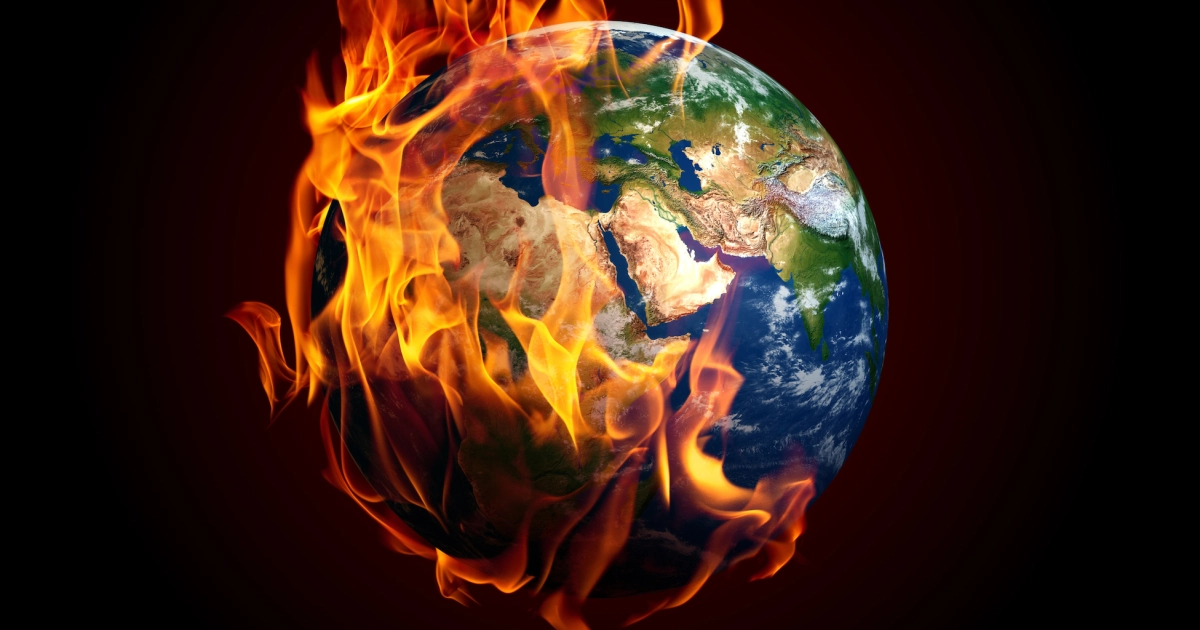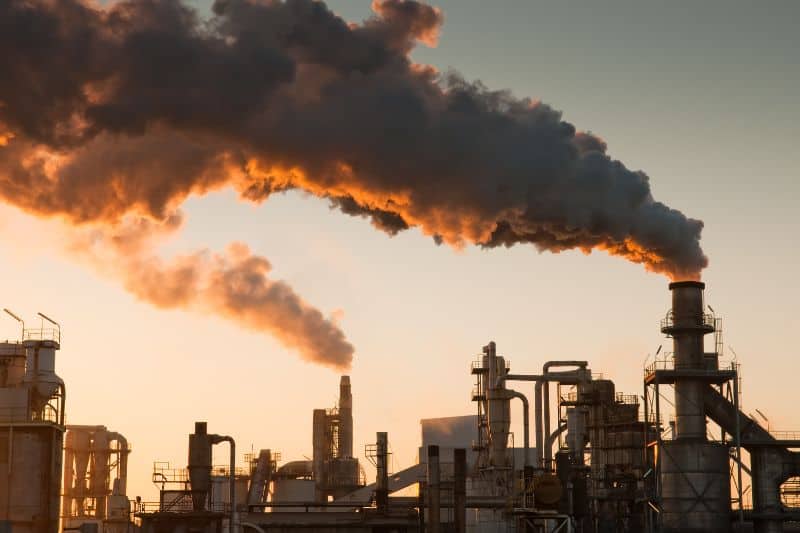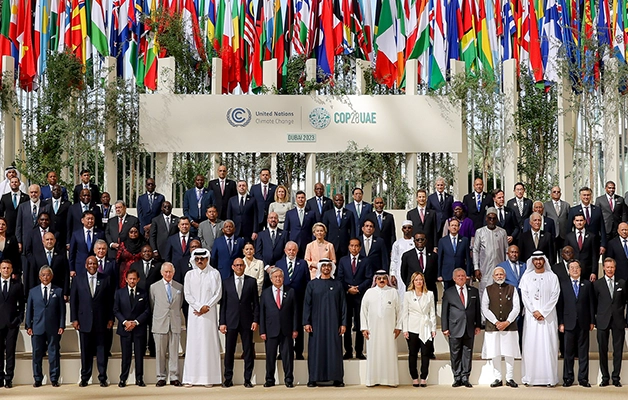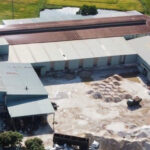Global warming is a complex tapestry woven into the structure of our planet's climate system. With the unprecedented warming in recent years, it has become a serious environmental challenge of our time, putting immense pressure on leaders worldwide.
Global warming
Global warming is the prolonged heating of the Earth's surface observed since the pre-industrial era (from 1850 to 1900). The average air and ocean temperatures on Earth have been gradually increasing based on observations by experts over many years. While this trend has been ongoing for a long time, its pace has significantly accelerated in recent years.

Causes of global warming:
1. Natural causes
Solar energy activity: One of the first natural causes is the intense activity of solar energy causing short-term heat cycles. As the sun gets larger, it produces more radiation during nuclear synthesis. While harmful solar rays are diverted due to the ozone layer and Earth's magnetic field, they still contribute to climate change because some of this radiation remains in the atmosphere, stored as heat, and raises the planet's average temperature.
Increase in water vapor: Water vapor is a greenhouse gas with natural heat-retaining abilities. It contributes to the natural greenhouse effect, and it is through water vapor that we can exist in this comfortable temperature for life to thrive. However, as the amount of water vapor in the atmosphere increases, the Earth's heat retention capacity also rises, leading to an increase in atmospheric temperature.
2. Human causes
Humans are increasingly detached from nature, depleting natural resources for their own benefit. People use various methods to transform energy in many forms to serve their lives and social processes. The use of energy released from fossil fuels is diverse, such as burning natural resources for cooking, igniting gasoline and diesel for engines, and converting nuclear energy into electricity. Activities burning fossil fuels like coal, oil, and natural gas release large amounts of greenhouse gases into the atmosphere. Carbon dioxide (CO2), methane (CH4), nitrous oxide (N2O), and fluorinated gases trap heat, preventing it from escaping into space and gradually raising Earth's temperature.
Furthermore, the increase in CO2 emissions is also evident in agriculture. The clearing of large forests, whether for agricultural purposes or urban development, contributes to global warming. Plants act as carbon reservoirs, absorbing CO2 from the atmosphere during photosynthesis. When these plants are cut down or burned, the stored carbon is released back into the atmosphere, increasing the greenhouse effect.

Impact of global warming:
- Temperature rise: Perhaps the most obvious consequence of global warming is the increase in the average global temperature. This warming trend leads to heatwaves, affecting ecosystems, agriculture, and human health. It disrupts the delicate balance of climate systems, with far-reaching effects.
- Melting ice and rising sea levels: Climate warming causes glaciers and polar ice caps in polar regions to melt, contributing to rising sea levels. This poses a serious threat to coastal areas, leading to flooding, increased erosion, and the potential displacement of communities.
- Extreme weather events: Global warming increases the frequency and intensity of extreme weather events. Hurricanes, droughts, floods, wildfires, and other natural disasters occur more frequently, causing widespread destruction and posing challenges for disaster preparedness and response.
- Impact on ecosystems and biodiversity: Changes in temperature and weather patterns disrupt ecosystems and threaten biodiversity. Species must migrate or adapt quickly, often facing challenges in finding suitable habitats and resources.
Earth is warming at an unprecedented rate
According to Al Jazeera, from 2013 to 2022, human-induced global warming increased at an unprecedented rate of over 0.2 degrees Celsius per decade. In the comprehensive climate science update, it is shown that the average CO2 emissions now reach the highest level ever recorded, at 54 billion tons per year, or about 1,700 tons per second.
These findings seemingly close the door on limiting global warming to the ambitious 1.5-degree Celsius target of the 2015 Paris Agreement. This has long been recognized as the safeguard threshold for a relatively climate-safe world.
World leaders will have to confront this new data at the crucial COP28 climate summit at the end of 2023 in Dubai. This is the United Nations' "global inventory" opportunity to assess progress toward the temperature goals of the 2015 Paris Agreement. The lead author of the study, Professor Piers Forster of the University of Leeds (UK), stated, "Although we haven't reached the 1.5-degree Celsius additional warming, the 'carbon budget'—the amount of greenhouse gas humans can emit without exceeding that limit—may be exhausted in a few years."

In general, global warming will continue to be a highly discussed and challenging environmental issue that requires many solutions and efforts to address.
| View more blogs: | Giant Hole in Earth's Ozone Layer |
| Air quality is at an alarming level in the Ho Chi Minh city | |
| Carbon credits - "Golden key" for green economic development |
For further information, please contact:
Email: info@ilotusland.com.
Hotline: +84 909 403 778
Facebook: iLotusLand – Leading in Industrial IoT Solutions
Linked in: iLotusLand – The 1st IoT Platform in Vietnam









